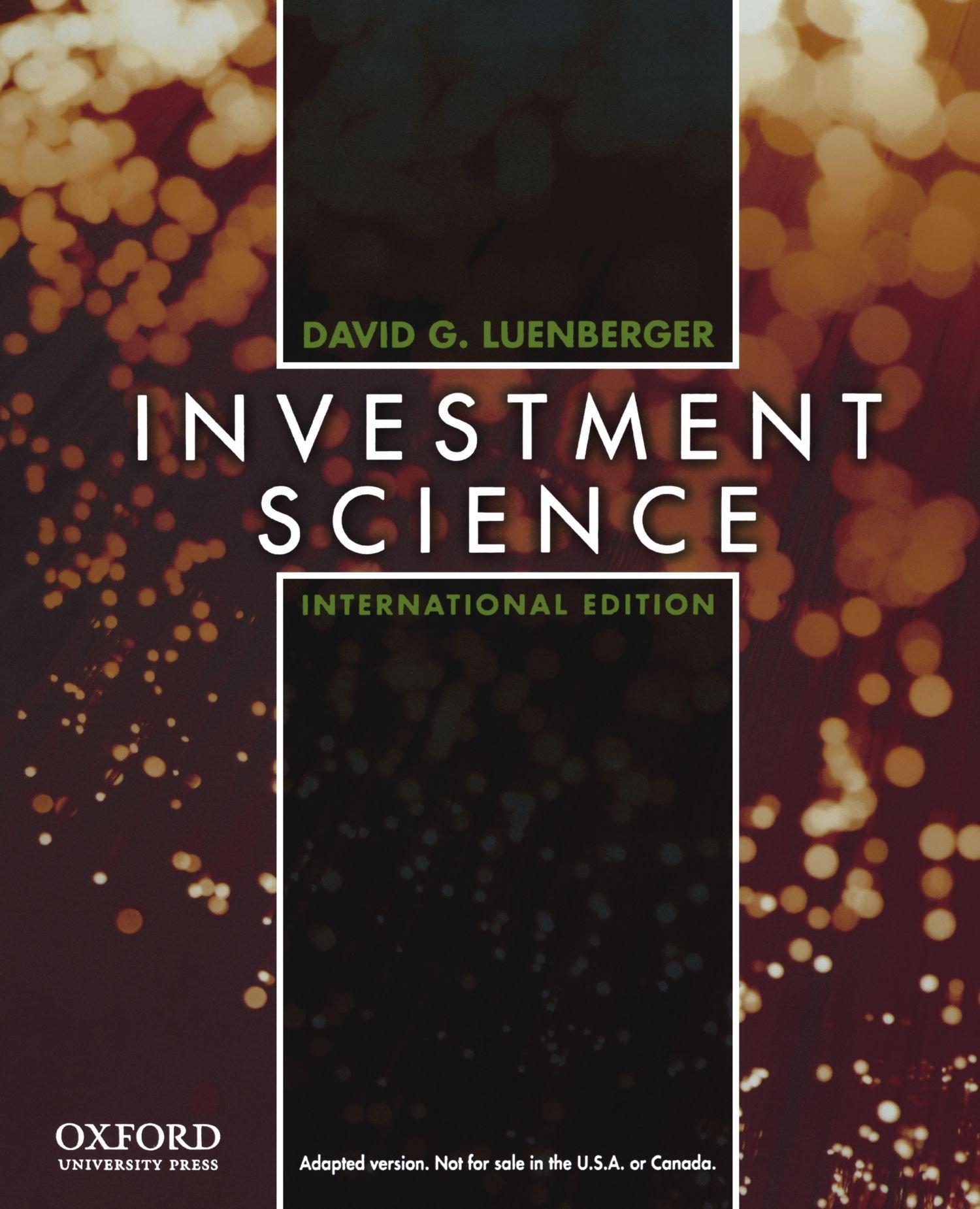Question
An example of Mean-Variance Analysis It is possible to calculate which investments have the greatest variance and expected return. Assume the following investments are in
An example of Mean-Variance Analysis It is possible to calculate which investments have the greatest variance and expected return. Assume the following investments are in an investor's portfolio:
- Investment A: Amount = $100,000 and expected return of 5%
- Investment B: Amount = $300,000 and expected return of 10%
In a total portfolio value of $400,000, the weight of each asset is: - Investment A weight = $100,000 / $400,000 = 25% - Investment B weight = $300,000 / $400,000 = 75% => Portfolio expected return = (25% x 5%) + (75% x 10%) = 8.75%.
The correlation between the two investments is 0.65. The standard deviation, or square root of variance, for Investment A is 7%, and the standard deviation for Investment B is 14%. => Portfolio variance = (25% ^ 2 x 7% ^ 2) + (75% ^ 2 x 14% ^ 2) + (2 x 25% x 75% x 7% x 14% x 0.65) = 0.0137
The portfolio standard deviation is the square root of the answer: 11.71%.
My questions:
1. How can I get the correlation between the two investments is 0.65?
2. Where can I get the standard deviation of Investment A (7%) and Investment B (14%)?
3. What should an investor make decisions after he got:
- Portfolio expected return = 8.75%.
- Portfolio variance = 0.0137
- Portfolio standard deviation = 11.71%.
Step by Step Solution
There are 3 Steps involved in it
Step: 1

Get Instant Access to Expert-Tailored Solutions
See step-by-step solutions with expert insights and AI powered tools for academic success
Step: 2

Step: 3

Ace Your Homework with AI
Get the answers you need in no time with our AI-driven, step-by-step assistance
Get Started


